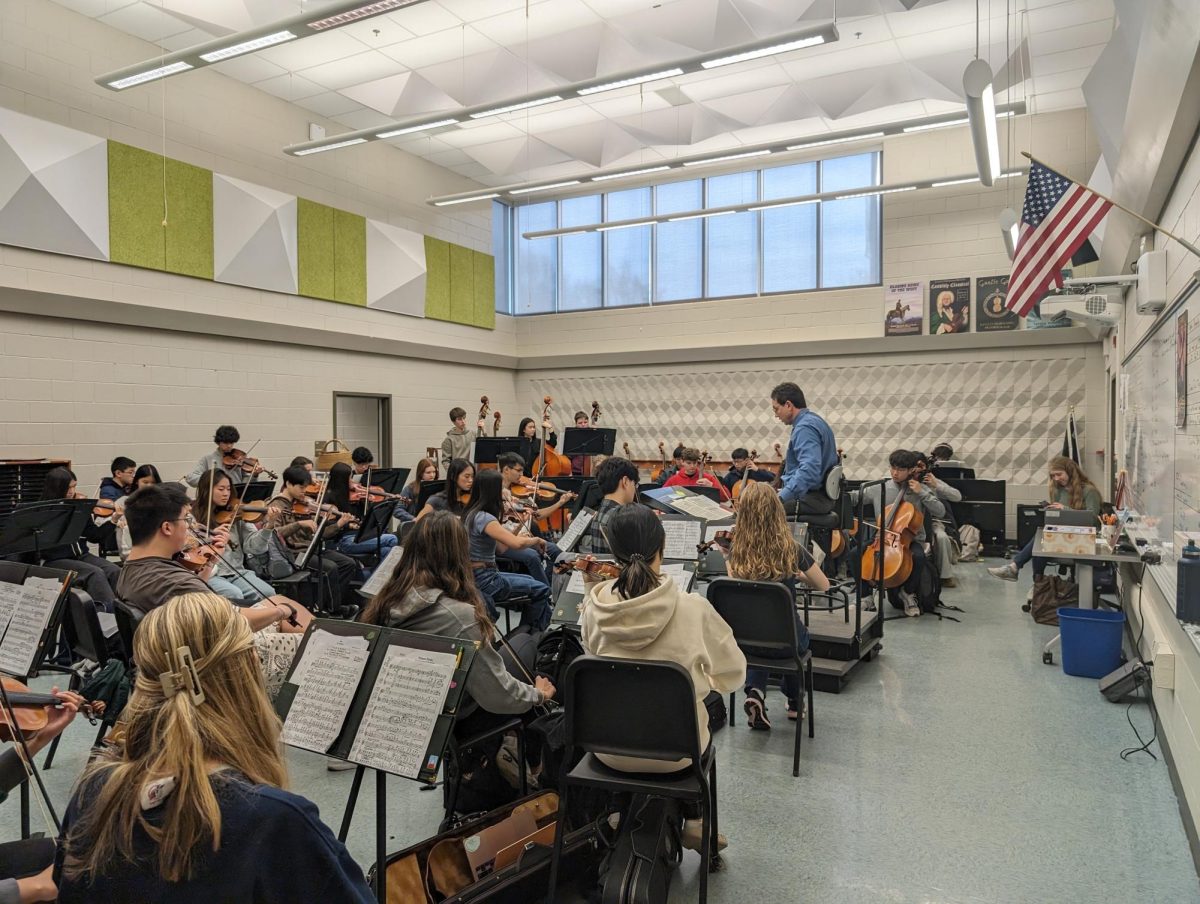On March 1st, Langley Symphonic and Philharmonic students will go to Orchestra Assessment, which is an important test for orchestra. The Philharmonic orchestra is playing a combination of different styles of pieces for assessment, which is an annual test for orchestra students performing together, including pieces from the classical and romantic era.
“This year we’re playing Piazzolla’s seasons in Buenos Aires, we’re playing the spring and winter, and then we’re playing the Magic Flute which is by Mozart, it’s a funny little piece,” Amiliya Smith, junior cellist in the Philharmonic Orchestra, said. “We’re also playing Vaughan Williams, so it’s a one in a million kind of piece.”
The Symphonic Orchestra is also playing several pieces, some of them they’ve already performed at the November concert. All the pieces have a common classical theme.
“We’re playing several movements of the Capriol Suite by Warlock.” Elizabeth Wanamaker, junior cellist in the Symphonic Orchestra, said. “We’re going to play Sylvanic Dance by Dvorak and we’re going to play Mozart’s 25th Symphony.”
The Philharmonic Orchestra has performed some of the pieces in their last concert, which was in November.
“The whole orchestra has been preparing [for assessment] since December, or when we got back from break,” Audrey Goodner, senior violinist in Philharmonic Orchestra, said. “We started the Piazzolla in January.”
Assessment is held at a high school, and this year it’s at Madison High. The Philharmonic students get there at 7:30 PM.
“We don’t have a lot of time [to warm up]. It really depends on when they admit us and when our scheduled time is, but they’ll just warm up people to run through a few things,” Goodner said.
During assessments, they also have to sight-read a piece. Sightreading is playing a piecefor the first time, which can be challenging as an orchestra, since everyone has to stay together.
“We have a tradition where every time we do sightreading, we sing. We sing [the piece],” Smith said. “We clap and then we sing it.”
The difficulty of the sightreading piece depends on the difficulty of the pieces that the orchestra prepared. So, the more difficult the pieces, the more challenging the sightreading will be. The levels of difficulty are from 1 to 6, with 6 being the most difficult and 1 being the easiest. They are ranked by the VBODA association.
“It’s not too hard, so we usually play out like a level six, and then for a sightreading, they’ll give us a level four,” Smith said.
Assessments are scored from one to five, with one being the highest and five being the lowest score.
“It’s judged on how you play your music and the judges have your music, so they can see all the bowings and all the notes, and you’re judged on musicality and dynamics,” Wanamaker said.
Assessment is a really important part of orchestra, so the students have been practicing and preparing the music. They’ll have a preassessment concert on February 20th as a layout for how assessment might sound like.
“The music is really difficult, so we’ve been working really hard,” Wanamaker said. “I think we can do well, as long as we focus these last few weeks.”
Langley Orchestra Prepares for Assessment
Langley orchestra students prepare for their pre-assessment concert on February 20th and their assessment on March 1st.
Zifei Zhao, Reporter
March 7, 2024


